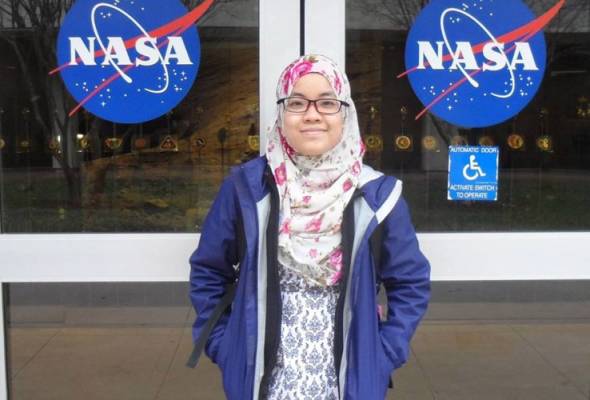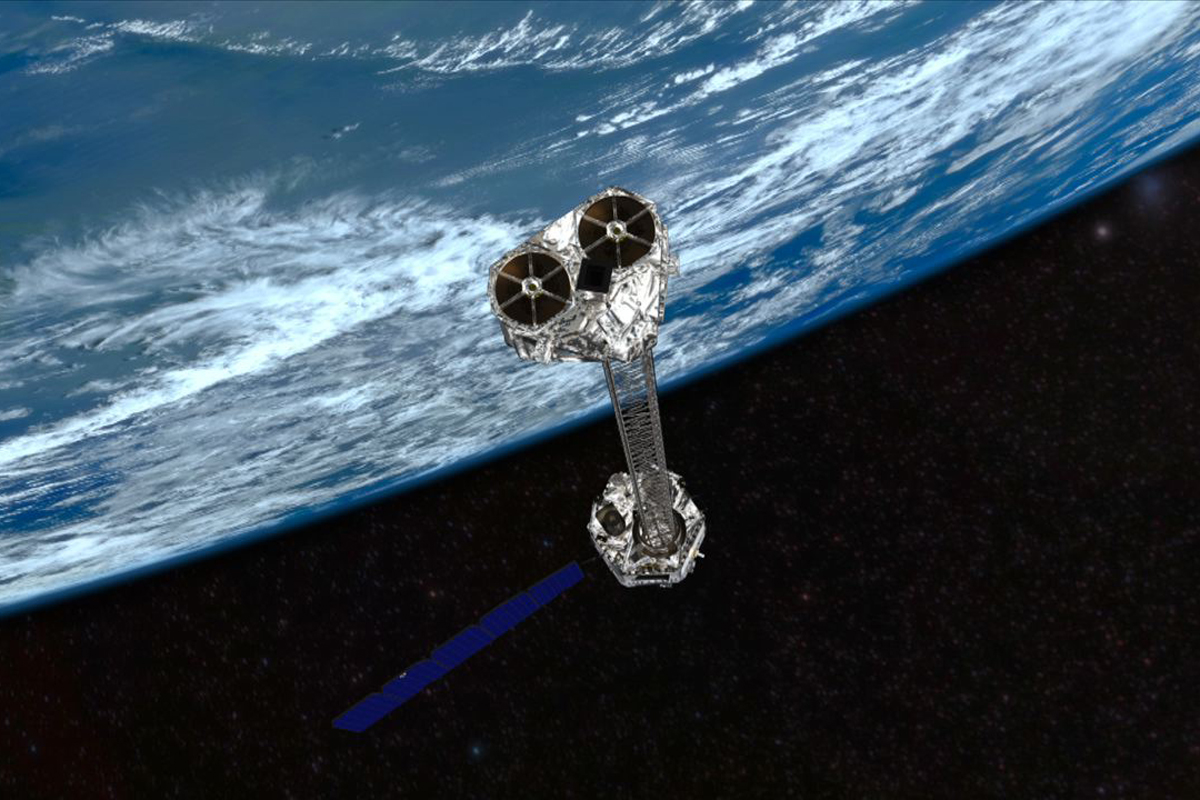A few days ago, Malaysians were delighted by the news of a team, led by Dr. Adlyka Annuar from University Kebangsaan Malaysia (UKM), finding growing supermassive black holes, which turned out to be luminous “monsters” hiding behind thick clouds of dust and gas.
What is black hole even and why is the discovery important, you may ask?
According to NASA, a black hole "is a place in space where gravity pulls so much that even light can not get out. The gravity is so strong because matter has been squeezed into a tiny space. This can happen when a star is dying."
Since no light can leave black holes, you can't see them even if you own a telescope...unless it's one that was built specifically to observe the phenomenon and you have the knowledge as well as the skills to find them.
Finding one blackhole is extremely hard, so imagine the surprise when Dr. Adlyka found four growing black holes located just less than 50 million light-years (in terms of cosmic distance, this is fairly close) from earth.
"These growing black holes appear faint and weak based upon their low energy X-ray light emitted by the material they consumed. However, emission at other light wavelengths (such as optical and infrared) suggested that they might be more powerful than we thought," a statement by UKM said.

Dr Adylka is the principal researcher of the project and started getting involved in the studies of black holes when she was doing her PhD in Durham University United Kingdom between 2013 and 2017, where she was involved with the NuSTAR telescope collaboration.
"I was and still am the principal researcher in the study of hidden supermassive black holes in our nearby galaxies using NuSTAR. In 2017, when I was still doing my PhD in Durham, I also uncovered another hidden supermassive black hole at the centre of NGC 1448 galaxy," she told Rojak Daily.
"However, if we use an X-ray telescope to observe the sky, we can see that it is actually glowing in X-rays. This is what we call as the cosmic X-ray background radiation.
"The origin of this emission was unknown until recent years where we found evidence that it is coming from material being accreted (brought together through influence of gravitation) onto growing black holes," she said.
_1.gif)
She added that to obtain a complete understanding of this radiation and the growth of supermassive black hole across cosmic time, there is a need to find all of the black holes in our universe.
Sounds like a mammoth task, but Dr Adylka said that with the existence of NuSTAR telescope, astronomers are now able to identify many more nearby hidden black holes, thereby helping them to understand the origin of the cosmic X-ray background radiation and the growth of supermassive black holes.

She used a high energy X-ray telescope called NuSTAR, which is operated by NASA, to observe the centre of the galaxies.
This telescope is able to detect high energy X-ray light from the black holes that have high enough energy to penetrate through the thick clouds of gas, and reveal the presence of the black holes.
The research took about two years, from the data collection stage to publication of the results in a scientific journal.
"As we know, our own galaxy has a supermassive black hole at the centre. This research can help us understand more about the black hole in our galaxy, and how its growth can affect our own 'home'," she said.
The team's work doesn't stop at finding the black holes.
Dr Adylka told Rojak Daily that the team is planning to study the black holes in more detail, especially the one that is located at the heart of ESO 121-G6 galaxy.
"This black hole is particularly interesting as it has been observed to increase in luminosity/power ~100 times over a period of a decade.
"The reason for this could be because the black hole was even more buried before, or it gains more power due to increase in "food" supply. We want to know more details," she said.
Sounds super cool doesn't it? We wish Dr Adylka and her team the best of luck!
What is black hole even and why is the discovery important, you may ask?
According to NASA, a black hole "is a place in space where gravity pulls so much that even light can not get out. The gravity is so strong because matter has been squeezed into a tiny space. This can happen when a star is dying."
Since no light can leave black holes, you can't see them even if you own a telescope...unless it's one that was built specifically to observe the phenomenon and you have the knowledge as well as the skills to find them.
And a Malaysian found it
Finding one blackhole is extremely hard, so imagine the surprise when Dr. Adlyka found four growing black holes located just less than 50 million light-years (in terms of cosmic distance, this is fairly close) from earth. "These growing black holes appear faint and weak based upon their low energy X-ray light emitted by the material they consumed. However, emission at other light wavelengths (such as optical and infrared) suggested that they might be more powerful than we thought," a statement by UKM said.

Dr Adylka is the principal researcher of the project and started getting involved in the studies of black holes when she was doing her PhD in Durham University United Kingdom between 2013 and 2017, where she was involved with the NuSTAR telescope collaboration.
"I was and still am the principal researcher in the study of hidden supermassive black holes in our nearby galaxies using NuSTAR. In 2017, when I was still doing my PhD in Durham, I also uncovered another hidden supermassive black hole at the centre of NGC 1448 galaxy," she told Rojak Daily.
The discovery
Dr Adylka, lecturer and astrophysicist at the Department of Applied Physics in UKM, explained that when we look at the sky with our naked eye, the spaces between the sun, moon, planets and other objects that we can see appears to be dark."However, if we use an X-ray telescope to observe the sky, we can see that it is actually glowing in X-rays. This is what we call as the cosmic X-ray background radiation.
"The origin of this emission was unknown until recent years where we found evidence that it is coming from material being accreted (brought together through influence of gravitation) onto growing black holes," she said.
_1.gif)
She added that to obtain a complete understanding of this radiation and the growth of supermassive black hole across cosmic time, there is a need to find all of the black holes in our universe.
Sounds like a mammoth task, but Dr Adylka said that with the existence of NuSTAR telescope, astronomers are now able to identify many more nearby hidden black holes, thereby helping them to understand the origin of the cosmic X-ray background radiation and the growth of supermassive black holes.

She used a high energy X-ray telescope called NuSTAR, which is operated by NASA, to observe the centre of the galaxies.
This telescope is able to detect high energy X-ray light from the black holes that have high enough energy to penetrate through the thick clouds of gas, and reveal the presence of the black holes.
The research took about two years, from the data collection stage to publication of the results in a scientific journal.
"As we know, our own galaxy has a supermassive black hole at the centre. This research can help us understand more about the black hole in our galaxy, and how its growth can affect our own 'home'," she said.
The research continues

The team's work doesn't stop at finding the black holes.
Dr Adylka told Rojak Daily that the team is planning to study the black holes in more detail, especially the one that is located at the heart of ESO 121-G6 galaxy.
"This black hole is particularly interesting as it has been observed to increase in luminosity/power ~100 times over a period of a decade.
"The reason for this could be because the black hole was even more buried before, or it gains more power due to increase in "food" supply. We want to know more details," she said.
Sounds super cool doesn't it? We wish Dr Adylka and her team the best of luck!






